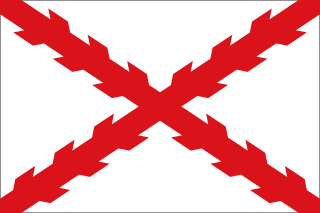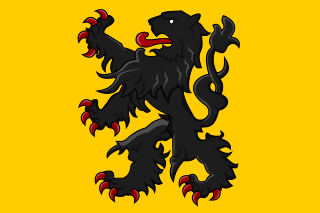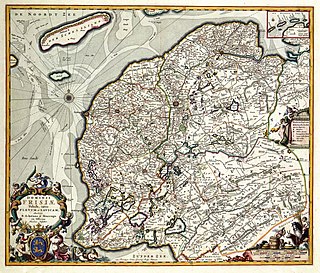 W
WThe Seventeen Provinces were the Imperial states of the Habsburg Netherlands in the 16th century. They roughly covered the Low Countries; that is, what is now the Netherlands, Belgium, Luxembourg, and most of the French departments of Nord and Pas-de-Calais (Artois). Also within this area were semi-independent fiefdoms, mainly ecclesiastical ones, such as Liège, Cambrai and Stavelot-Malmedy.
 W
WThe Burgundian Circle was an Imperial Circle of the Holy Roman Empire created in 1512 and significantly enlarged in 1548. In addition to the Free County of Burgundy, the Burgundian Circle roughly covered the Low Countries, i.e., the areas now known as the Netherlands, Belgium and Luxembourg and adjacent parts in the French administrative region of Nord-Pas-de-Calais.
 W
WThe County of Artois was a historic province of the Kingdom of France, held by the Dukes of Burgundy from 1384 until 1477/82, and a state of the Holy Roman Empire from 1493 until 1659.
 W
WThe Duchy of Brabant was a State of the Holy Roman Empire established in 1183. It developed from the Landgraviate of Brabant and formed the heart of the historic Low Countries, part of the Burgundian Netherlands from 1430 and of the Habsburg Netherlands from 1482, until it was partitioned after the Dutch revolt.
 W
WThe County of Drenthe, was a province of the Holy Roman Empire from 1046, and of the Dutch Republic from 1581 until 1795. It corresponds to the area west of the lower Ems, today the eponymous province of Drenthe in the Netherlands.
 W
WThe County of Flanders was a historic territory in the Low Countries.
 W
WThe Lordship of Frisia or Lordship of Friesland was a feudal dominion in the Netherlands. It was formed in 1524 when Emperor Charles V finally conquered Frisia.
 W
WGuelders or Gueldres is a historical county, later duchy of the Holy Roman Empire, located in the Low Countries.
 W
WThe County of Hainaut, was a territorial lordship within the medieval Holy Roman Empire, straddling what is now the border of Belgium and France. Its most important towns included Mons, now in Belgium, and Valenciennes, now in France.
 W
WThe County of Holland was a State of the Holy Roman Empire and from 1432 part of the Burgundian Netherlands, from 1482 part of the Habsburg Netherlands and from 1581 onward the leading province of the Dutch Republic, of which it remained a part until the Batavian Revolution in 1795. The territory of the County of Holland corresponds roughly with the current provinces of North Holland and South Holland in the Netherlands.
 W
WThe Duchy of Limburg or Limbourg was an imperial estate of the Holy Roman Empire. Its chief town was Limbourg-sur-Vesdre, is today located within the Belgian province of Liège, with a small part in the neighbouring province of Belgian Limburg, within the east of Voeren.
 W
WThe Duchy of Luxemburg was a state of the Holy Roman Empire, the ancestral homeland of the noble House of Luxembourg. The House of Luxembourg, now Duke of Limburg, became one of the most important political forces in the 14th century, competing against the House of Habsburg for supremacy in Central Europe. They would be the heirs to the Přemyslid dynasty in the Kingdom of Bohemia, succeeding the Kingdom of Hungary and contributing four Holy Roman Emperors until their own line of male heirs came to an end and the House of Habsburg got the pieces that the two Houses had originally agreed upon in the Treaty of Brünn in 1364.
 W
WThe Lordship of Mechelen was until 1795 a small independent Lordship in the Low Countries, consisting of the city of Mechelen and some surrounding villages.
 W
WNamur was a county of the Carolingian and later Holy Roman Empire in the Low Countries. Its territories largely correspond with the present-day Belgian arrondissement Namur plus the northwestern part of the arrondissement Dinant, both part of the modern province of Namur, and previously part of the French Republican department of Sambre-et-Meuse.
 W
WThe Lordship of Overijssel or Overissel is a former division of the Netherlands named for its position along the river Issel.
 W
WThe Tournaisis was a small territory in the Low Countries independent during the Middle Ages, consisting of the city of Tournai and the surrounding area, which now forms part of Hainaut province in Belgium.
 W
WThe Lordship of Utrecht was formed in 1528 when Charles V of Habsburg conquered the Bishopric of Utrecht, during the Guelders Wars.
 W
WThe County of Zeeland was a county of the Holy Roman Empire in the Low Countries. It covered an area in the Scheldt and Meuse delta roughly corresponding to the modern Dutch province of Zeeland. The County of Zeeland did not include the region of Zeelandic Flanders which was part of Flanders; conversely, the modern Province of Zeeland does not include Sommelsdijk, historically part of the County of Zeeland.